Prosperous and comfortable Oslo is an example of restraint, diligence and determination of the northern peoples, who had to work hard and constantly invent something new to survive. The best trends of modern architecture and progressive solutions in the field of urban infrastructure have united in the Norwegian capital. The magnificent opera house and museum complex Astrup-Fearnley are bright examples of urban planning of the future.
On the other hand, there are almost no old buildings and quarters left in Oslo. City temples were erected at the end of the 18th - beginning of the 19th centuries, the palaces are not particularly pompous and luxurious. An idea of the medieval architecture of the Norwegian capital can only be drawn from the Akershus fortress and the old church of Akera.
What to see and where to go in Oslo?
The most interesting and beautiful places for walking. Photos and a short description.
- Akershus
- Royal Palace
- Parliament building (Storting)
- Town hall
- Karl Johan street
- Area Aker Bruges
- Viking Ship Museum
- Kon-Tiki Museum
- Vigeland Museum
- Fram Museum
- Munch Museum
- Folk Museum of Norway
- National Gallery
- Henie-Unstad Arts Center
- Astrup Fearnley Museum of Contemporary Art
- Nobel Peace Center
- Oslo Opera House
- Norwegian National Theater
- Cathedral
- St Olaf's Cathedral
- Church of the Holy Trinity
- Old Church of Aker
- Spasskoe cemetery
- Oslo Botanical Garden
- Vigeland Sculpture Park
- Amusement park Tusenfried
- Akerselva river
- Lake Sognsvann
- Holmenkollen
- Oslo fjord
Akershus
Castle of the XIV century in the central part of Oslo, the center of a powerful medieval fortification, which served as a defensive function until the XVII century. Under the ruler Christian IV, the castle was rebuilt in the Renaissance style. In the 19th century, the complex fell into disrepair, after which a complete restoration was carried out, and it became a place for state receptions. The castle chapel contains the graves of several Norwegian kings.

Address: Akershus, Oslo, Norway
Opening hours: Mon-Sun: 10:00-18:00
Royal Palace
A mid-19th century building originally built for King Karl Johan as his summer residence. The outer facade of the palace looks quite modest and emphasizes northern Norwegian restraint. The interior is decorated with works of national art. The building is surrounded by a park, on the palace square there is a regular changing of the guard. It is possible to visit the palace with a guided tour from June to August.
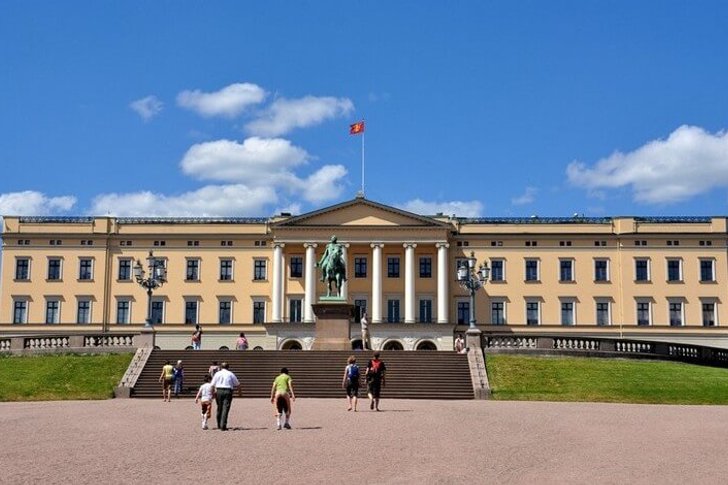
Address: Royal Palace, Oslo, Norway
Phone: +47 22 04 87 00
Opening hours: Monday to Sunday: 10:00 - 17:00
Parliament building (Storting)
The building, designed by the Swedish architect K. Johans. It is located near the Royal Palace. Compared to the royal residence, the parliament building looks quite elegant. The Norwegian Parliament, which consists of 169 deputies, sits in the Storting. Special excursions are organized for tourists, but from September to June they are held only on Saturdays.
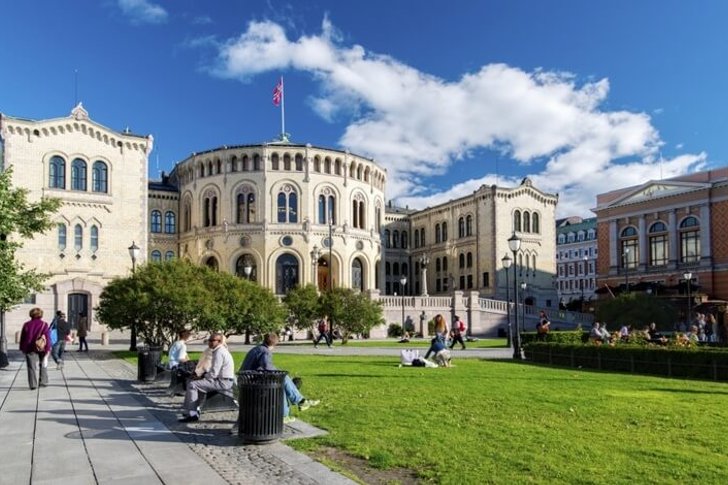
Address: Parliament building (Storting), Oslo, Norway
Phone: +47 21 61 50 00
Opening hours: Mon-Fri: 9:00-16:00, Sat-Sun: Closed
town hall
The building where the Oslo City Council meets. This is a modern building, built in the middle of the 20th century. The idea of building a new town hall arose after the break of the Swedish-Norwegian union in 1905. The town hall building is a significant architectural monument of the 20th century and a well-known symbol of Oslo. It hosts the annual Nobel Peace Prize ceremony.
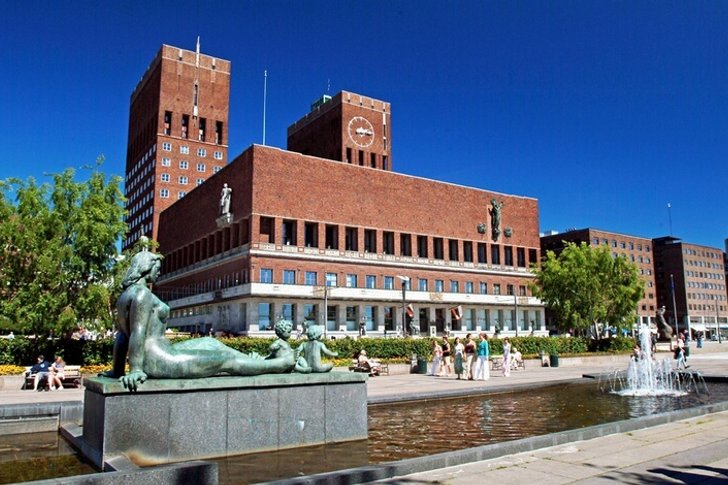
Address: Town hall, Oslo, Norway
Phone: +47 21 80 21 00
Opening hours: Mon-Fri: 08:00-16:00
Karl Johan street
One of the main streets of the city, named after King Charles IV Johan. It stretched from the Royal Palace to the Central Railway Station. The street is pedestrian. Numerous restaurants, shops and souvenir shops are open to guests of Oslo. Along the street are the main city attractions: the Norwegian National Theatre, the Cathedral, the parliament building, the palace park.
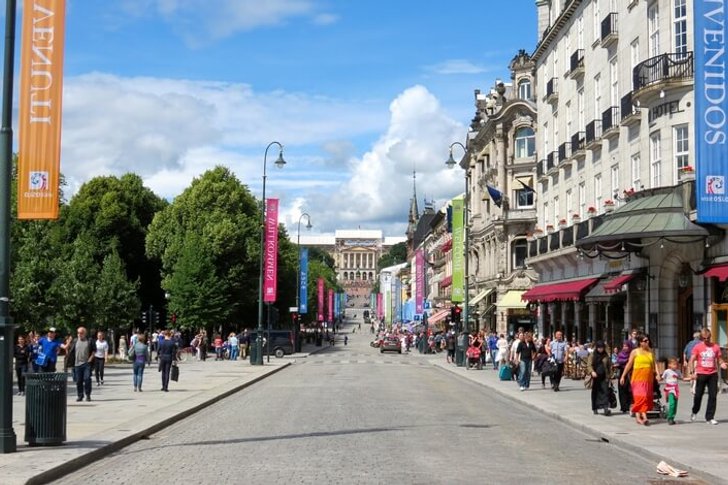
Address: Karl Johan street, Oslo, Norway
Opening hours: 08:00 - 22:00
Area Aker Bruges
At the beginning of the 19th century, Aker Brygge was an industrial area where the shipyards of the Akers Mek corporation were stationed. In the 80s. XX century, it was decided to create a recreational and entertainment zone on the territory of the district. Industrial buildings were quickly demolished, some of the buildings were reformatted and rebuilt. Today, Aker Brygge is a fashionable area with expensive shopping centers, apartments and trendy restaurants.
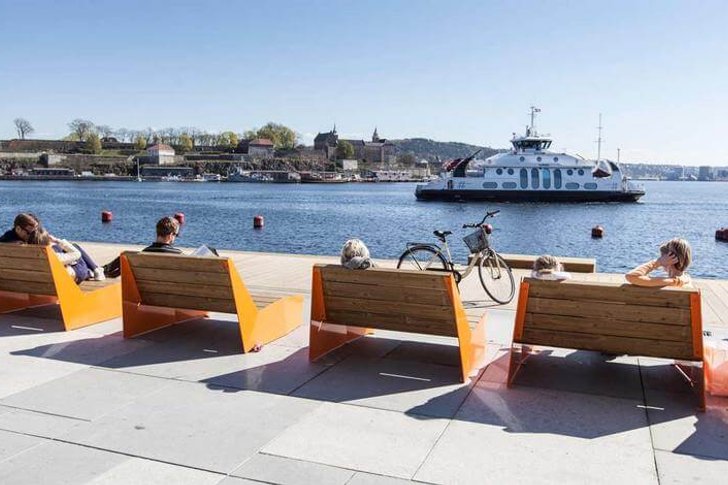
Address: Area Aker Bruges, Oslo, Norway
Opening hours: Mon-Fri 08:00-20:00, Sat 10:00-18:00, Sun Closed
Viking Ship Museum
A museum on the Bygdö peninsula within the city limits of Oslo, where the famous Viking drakkars are exhibited: the Oseberg ship, the Gokstad ship, the Tun ship. The exposition is part of the collection of the Museum of Cultural History. The building for the museum was erected at the beginning of the 20th century with funds from the state budget. Each ship is located in a separate room. In addition to ships, in the museum you can see various exhibits of the Viking Age: wagons, beds, vessels, sledges.
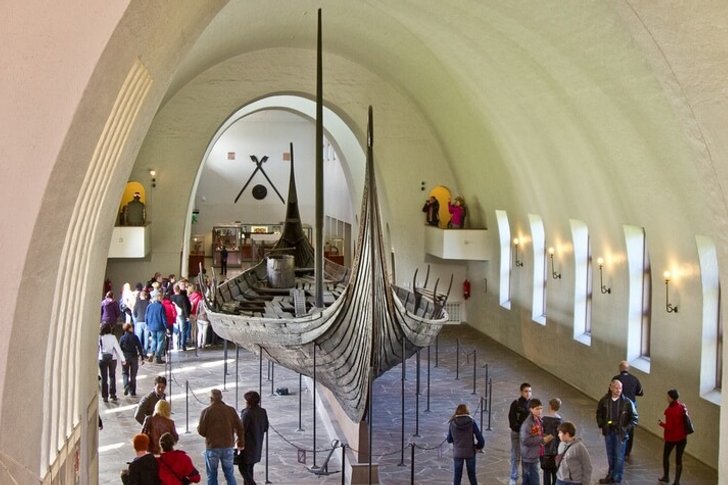
Address: Viking Ship Museum, Oslo, Norway
Phone: +47 22 13 52 00
Opening hours: 10:00 - 18:00
Kon-Tiki Museum
The exposition of the museum tells about the life and work of the Norwegian traveler T. Heyerdahl. This man is known for having crossed the Pacific Ocean on a raft in 1947, and also made several more long expeditions (including to Easter Island). The museum stores all the ships on which the traveler sailed: Kon-Tiki, Ra, Fatu-Khiva, Tigris, Ra II. The collection was founded by one of Heyerdahl's associates, K. Haugland.
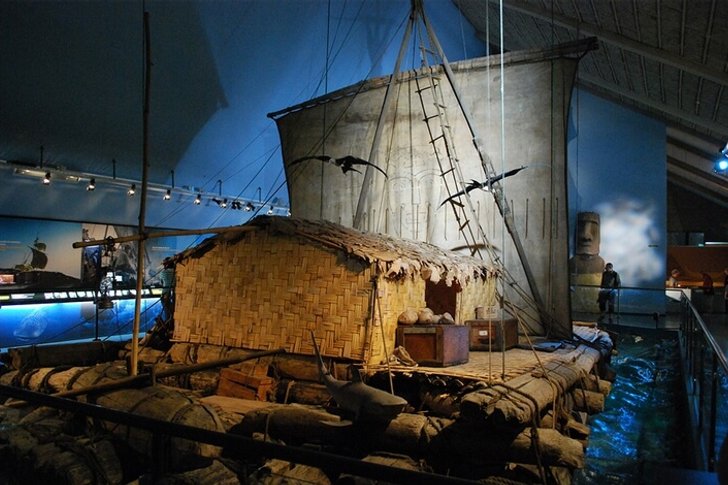
Address: Kon-Tiki Museum, Oslo, Norway
Phone: +47 22 12 37 00
Opening hours: 10:00 - 17:00
Vigeland Museum
The museum's collection is dedicated to the work of the original Norwegian artist E. Vigeland. The museum building was designed in 1926 with the participation of the master himself. The main hall of the museum is painted with frescoes that demonstrate various moments of human existence. The collection consists of paintings, drawings, sculptures created by Vigeland. Inside the building in the chapel is the tomb of the artist.
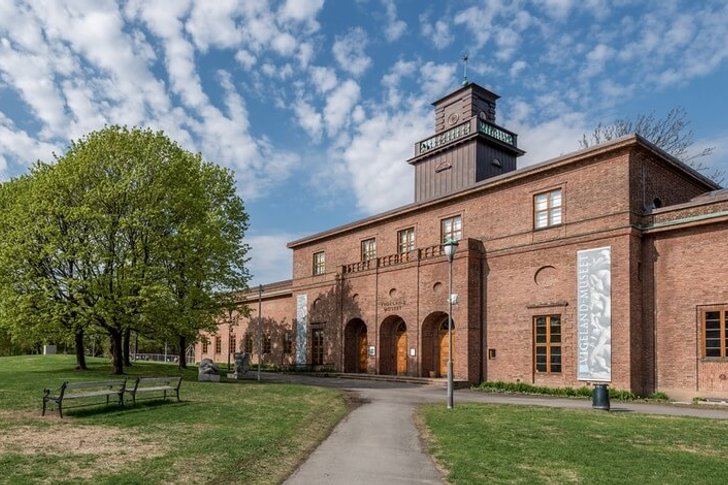
Address: Vigeland Museum, Oslo, Norway
Phone: +47 23 49 37 00
Opening hours: 10:00 - 17:00
Fram Museum
The museum exposition is dedicated to the numerous sea expeditions of the Norwegians. The central exhibit is the Fram ship, which went on three major voyages in the late 19th and early 20th centuries. These campaigns were organized with the aim of exploring and conquering the North Pole, but the attempt was successful only the second time. Along the way, the islands of the Canadian Arctic Archipelago were explored. The Fram Museum was opened in 1936.
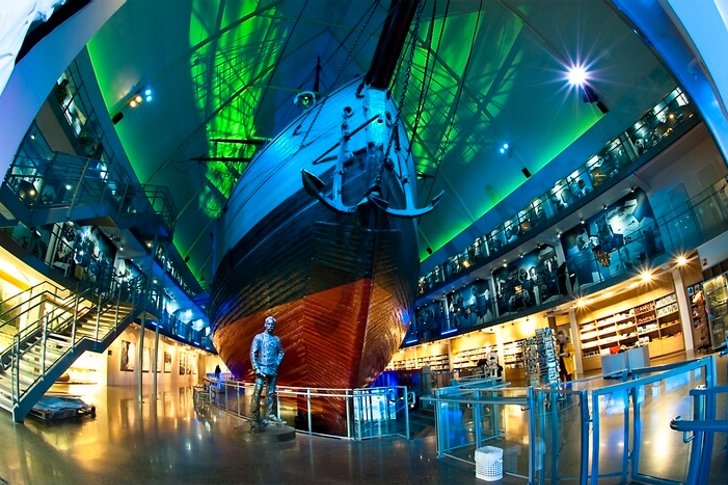
Address: Fram Museum, Oslo, Norway
Phone: +47 24 11 40 00
Opening hours: 10:00 - 17:00
Munch Museum
The opening of the museum was timed to coincide with the 100th anniversary of the birth of Edvard Munch, the famous Norwegian graphic artist and expressionist. This event took place in 1963. Over time, the museum has become one of the largest cultural centers in Oslo. The collection consists of several hundred paintings, 1.8 thousand engravings, 4.5 thousand drawings and several sculptures belonging to the hand of the master. In 2004, several exhibits were stolen from the museum, but two years later they were returned to their place.
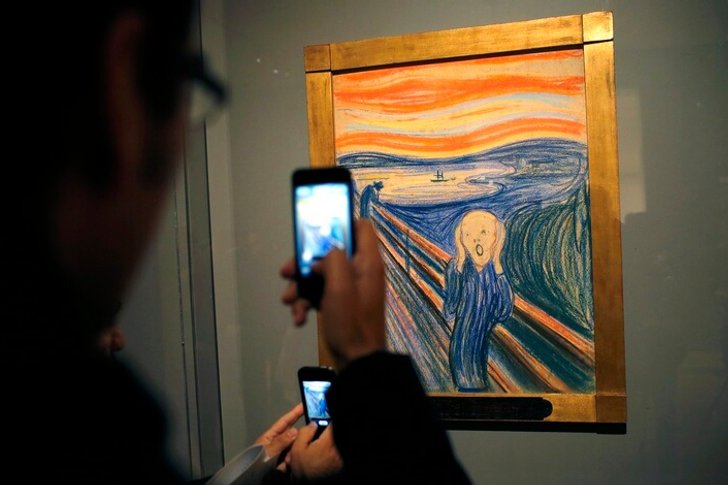
Address: Munch Museum, Oslo, Norway
Phone: +47 23 49 37 00
Opening hours: 10:00 - 18:00
Folk Museum of Norway
An open-air museum organized at the end of the 19th century. It covers an area of 14 hectares. The exposition consists of traditional Norwegian houses of various eras, collected from all over the country (more than 155 buildings in total). Inside, a traditional setting is recreated, giving an idea of the rural and town life of the past. A particularly valuable copy is the old church of 1200.
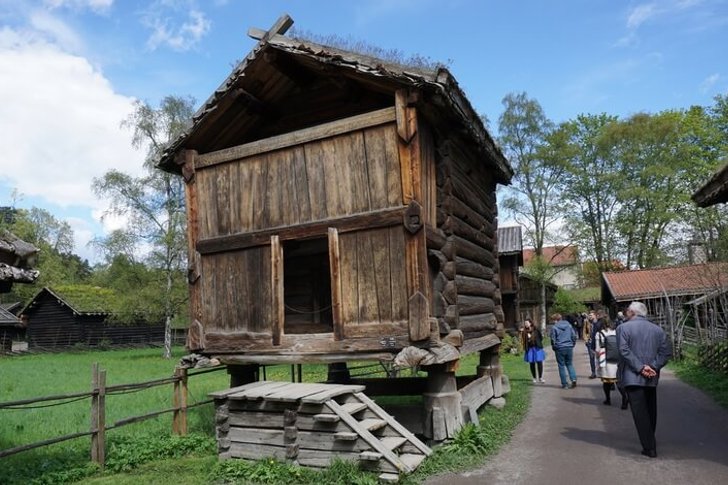
Address: Folk Museum of Norway, Oslo, Norway
Phone: +47 22 12 37 00
Opening hours: 10:00 - 17:00
National Gallery
City art gallery, which exhibits paintings by famous Norwegian and European masters. The museum was organized in the first half of the 19th century. There are works by Picasso, Renoir, Degas, Monet, Matisse, Gauguin, Goya, Van Gogh and other artists of the 19th and 20th centuries. Separate expositions are devoted to Norwegian painters, there is even a collection of Russian icons of the Novgorod school. On Sundays, admission to the gallery is free.

Address: National Gallery, Oslo, Norway
Phone: +47 21 98 20 00
Opening hours: 10:00 - 17:00
Henie-Unstad Arts Center
The center is about 10 km. from the Norwegian capital. It was founded in 1968 by Niels Unstad and Sonya Henie. The collection is based on a private collection of the family, consisting of 110 paintings. The Arts Center consists of six exhibition halls, an auditorium and a conference room. Outstanding masters - "classics" of modern art are exhibited here: Picasso, F. Leger, J. Miro, M. Ernst, P. Klee and others.
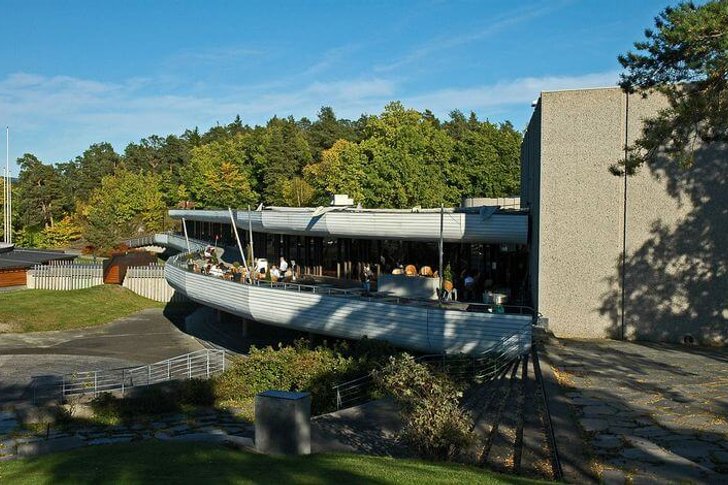
Address: Henie-Unstad Arts Center, Oslo, Norway
Opening hours: Tue-Sun: 11:00-17:00
Astrup Fearnley Museum of Contemporary Art
The museum building is located on the territory of the picturesque harbor. This modern building consists of three parts, united by a common glass roof. The museum is located in two parts of the building, offices are located in the third. You can walk from pavilion to pavilion on bridges over canals. In front of the museum there is a small picturesque park, perfect for relaxing after visiting the museum exposition.
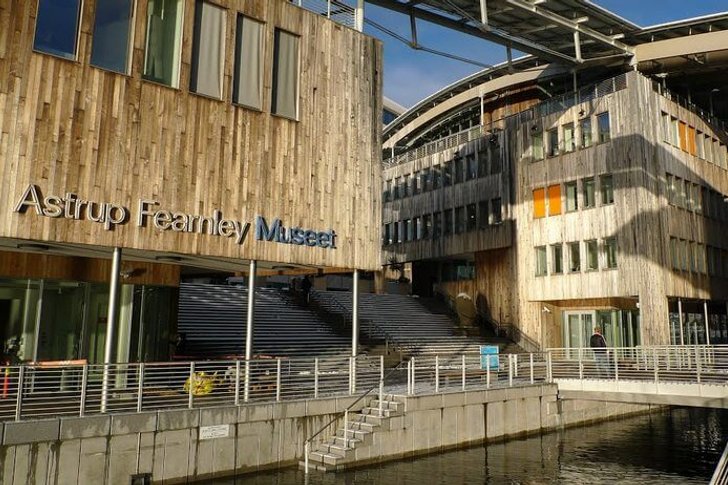
Address: Astrup Fearnley Museum of Contemporary Art, Oslo, Norway
Phone: +47 21 42 20 00
Opening hours: 10:00 - 18:00
Nobel Peace Center
The Nobel Peace Center is a discussion club, museum, archive and creative space. It was opened in 2005 in the presence of the Norwegian royal family. The expositions of the center show the peacekeeping role of Europe in resolving military conflicts and problems of a planetary scale, such as neglect of nature, climate change, and pollution. The institution operates a school.
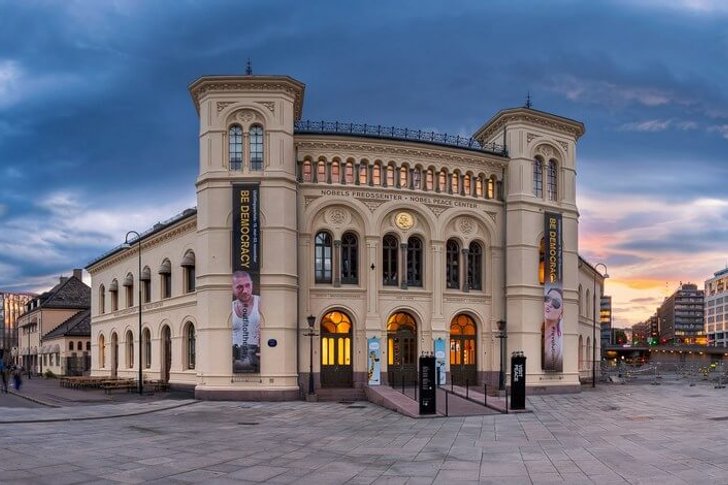
Address: Nobel Peace Center, Oslo, Norway
Phone: +47 24 14 90 00
Opening hours: 10:00 - 18:00
Oslo Opera House
The National Opera Stage, located in an outstanding building of modern architecture. The theater opened in 2008 and almost immediately became one of Oslo's most popular attractions. Even the President of Finland and the Queen of Denmark arrived at the opening ceremony. The architecture of the opera house building is dominated by asymmetrical lines, unusual shapes and large spaces. According to the feedback from the audience, excellent acoustics were achieved in the main hall.
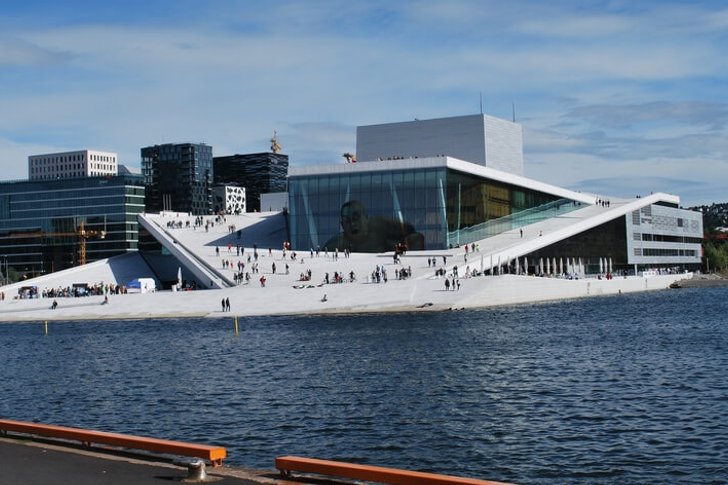
Address: Oslo Opera House, Oslo, Norway
Phone: +47 21 42 21 00
Opening hours: 10:00 - 19:00
Norwegian National Theater
Norway's largest drama theatre, built in 1899. A hundred years later, the building was declared a national cultural heritage. The construction of the theater was financed from private funds, at first it existed on sponsorship money. Later, the theater passed into state administration. The theater stage is dominated by plays by Norwegian, Swedish, German playwrights, but works by other authors are sometimes staged.

Address: Norwegian National Theater, Oslo, Norway
Phone: +47 23 33 32 00
Opening hours: 10:00 - 18:00
Cathedral
The main temple of Oslo, built in the 17th century at the expense of the townspeople. Since the 12th century, there have been two Christian churches in its place, but both have not stood the test of time. Stones, remains of walls and other building material left over from the old buildings were used in the construction of the Cathedral. In 2006, a major reconstruction was carried out and many interior details were replaced, but the old altar of the 17th century was preserved.

Address: Cathedral, Oslo, Norway
Phone: +47 23 35 55 00
Opening hours: Mon-Sun: 10:00-17:00
St Olaf's Cathedral
The Catholic church, which was built in the middle of the XIX century in the neo-Gothic style. After years of persecution of Catholics as a result of the Reformation, they still managed to regain their right to their own cathedral in the Norwegian capital. In honor of the consecration of the cathedral, Queen Josephine granted the parish a copy of the Sistine Madonna by Raphael. Pope John Paul II visited here in 1989. He presented a part of the relics of St. Olaf as a gift to the temple.
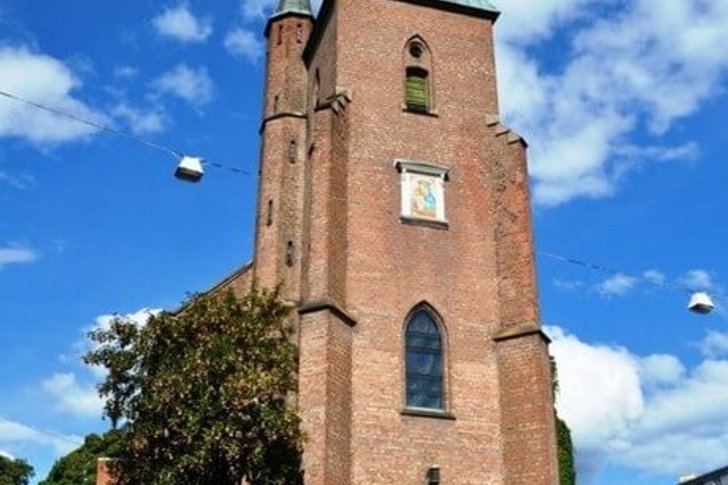
Address: St Olaf, Oslo, Norway
Phone: +47 22 42 27 50
Opening hours: Mon-Fri 10:00-16:00, Sat 10:00-14:00, Sun Closed
Church of the Holy Trinity
A spacious 19th-century church with a capacity of approximately 1,000 parishioners. The temple was built according to the project of the architect A. Chateauneuf in neo-Gothic style. The building has a cruciform shape and is crowned with a bell tower. The outer façade is predominantly made of red brick. Inside is a 19th-century altar and a historic organ. The windows of the church are decorated with picturesque stained-glass windows.
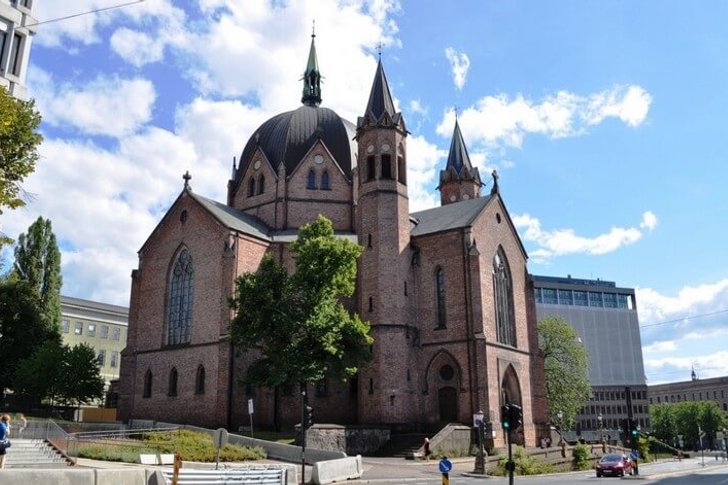
Address: Church of the Holy Trinity, Oslo, Norway
Opening hours: Mon-Fri: 10:00-16:00, Sat-Sun: 11:00-15:00
Old Church of Aker
The oldest building in Oslo and the only surviving medieval temple. The building is considered a valuable architectural monument. The first mention of this church is found in the sources of the XI-XII centuries. Presumably, the temple was erected under King Olaf III, who ruled Norway in 1067-1093. The first building was wooden, later a stone building appeared. In the 19th century, they wanted to demolish the church, but the Society for the Preservation of Historical Monuments stood up for it.
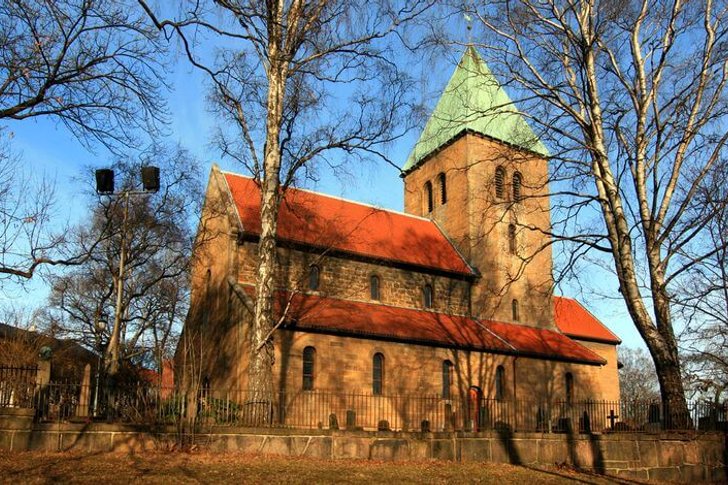
Address: Old Church of Aker, Oslo, Norway
Opening hours: Mon-Sun: 10:00 - 16:00
Spasskoe cemetery
One of the oldest necropolises in Oslo, founded in 1808. In the middle of the 19th century, the cemetery acquired its own Lutheran church, which, surprisingly, since 2003 has housed the parish of the Russian Orthodox Church. Burials ceased in the middle of the 20th century and the cemetery was declared a memorial one. Here are the graves of famous political, scientific and cultural figures of Norway.
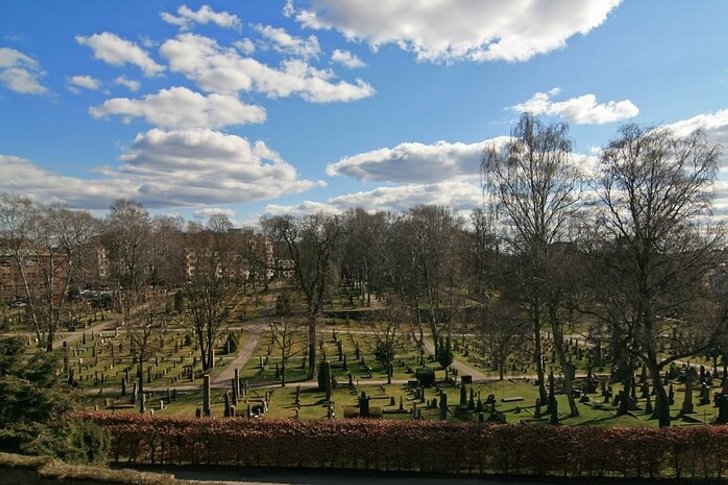
Address: Spasskoe cemetery, Oslo, Norway
Opening hours: 08:00 - 18:00
Oslo Botanical Garden
Norway is a country with a cool climate and a lot of rainy days. The more Oslo residents and tourists appreciate the beauty of the city's botanical garden, which blooms in summer and fills the warm air with sweet aromas. The garden was founded at the beginning of the 19th century, at the time of the maximum interest of European scientists in botany. In addition to ornamental plants, medicinal herbs are grown in large quantities on the territory.
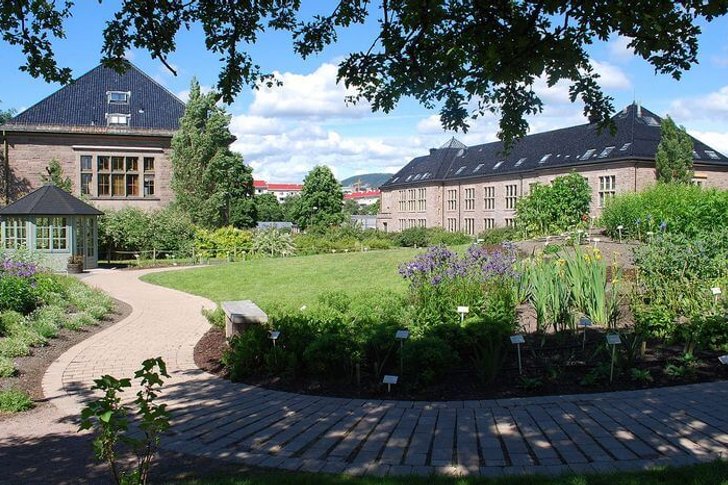
Address: Oslo Botanical Garden, Oslo, Norway
Phone: +47 22 18 50 50
Opening hours: 10:00 - 16:00
Vigeland Sculpture Park
The park is located in the open air, it houses 227 sculptures made of various materials: granite, iron, bronze. The exhibits were created by the Norwegian sculptor G. Vigeland. The master created only nudes, some sculptures of the park evoke mixed emotions, but it is believed that he was an outstanding sculptor. The central composition "Monolith" consists of intertwined human figures and depicts the cycle of life.
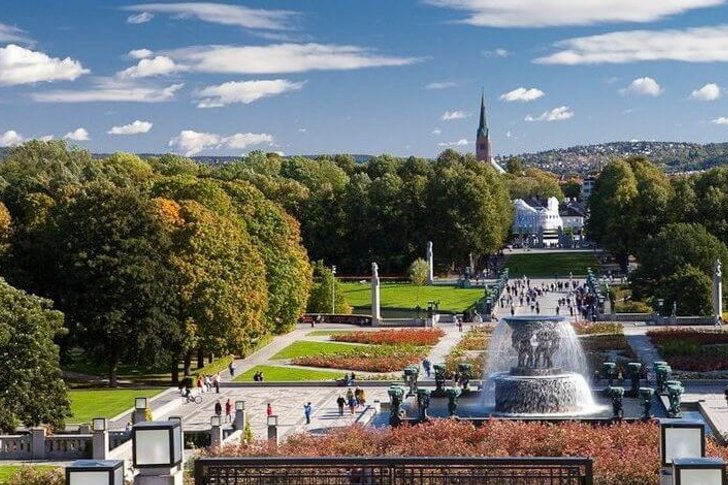
Address: Vigeland Sculpture Park, Oslo, Norway
Phone: +47 21 46 60 00
Opening hours: Open 24 hours.
Amusement park Tusenfried
Tusenfried is considered one of the largest and most popular amusement parks in Scandinavia. There are high-speed roller coasters, all kinds of bungee rides, carousels for the smallest visitors. On one of the rides you can feel the real state of weightlessness as in space. There are many cafes and eateries in the park, where a large selection of street food is provided.
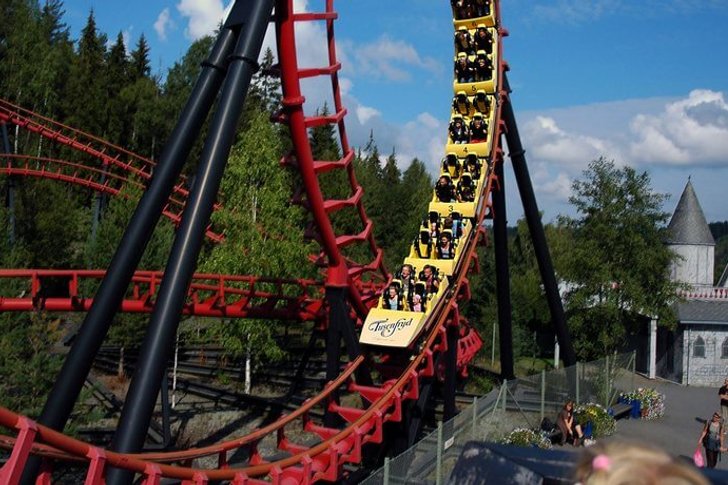
Address: Amusement park Tusenfried, Oslo, Norway
Opening hours: 10:00 - 22:00
Akerselva river
One of the longest rivers in Norway, stretching for 8.2 km. On its banks there are national parks and nature reserves. While walking along the Akerselva River, you can enjoy wonderful views of northern Norwegian nature. The river also flows through the territory of Oslo and provides economic activity for some of the industrial enterprises of the city.

Address: Akerselva river, Oslo, Norway
Opening hours: Always open
Lake Sognsvann
A wonderful area for outdoor recreation, where Norwegians like to go with the whole family for weekends and holidays. Hiking with tents in the vicinity of the lake, cycling, as well as skiing and skating in winter are very popular with local residents. It is not uncommon to see Norwegian politicians doing their morning jog or exercising here.

Address: Lake Sognsvann, Oslo, Norway
Opening hours: 06:00 - 22:00
Holmenkollen
One of the urban areas of Oslo, or rather, part of the Vestre Aker district. Ski and biathlon tracks are equipped on its territory, there are hotels, guest cottages, restaurants and a full-fledged tourist infrastructure. Holmenkollen is located on a hill at the highest point in Oslo. Every year one of the stages of the Biathlon World Cup is held here. The area became a sports and cultural center at the end of the 19th century.

Address: Holmenkollen, Oslo, Norway
Phone: +47 21 42 28 00
Opening hours: 09:00 - 21:00
Oslo fjord
A picturesque bay, one of the famous Norwegian fjords, which stretches from the Danish Straits to Oslo. People have settled on the shores of the Oslofjord since the Stone Age, and well-preserved remains of ancient Viking longships have been found here. A great many small islands are scattered around the bay, the coastline is heavily indented, which creates obstacles for the passage of large ships.
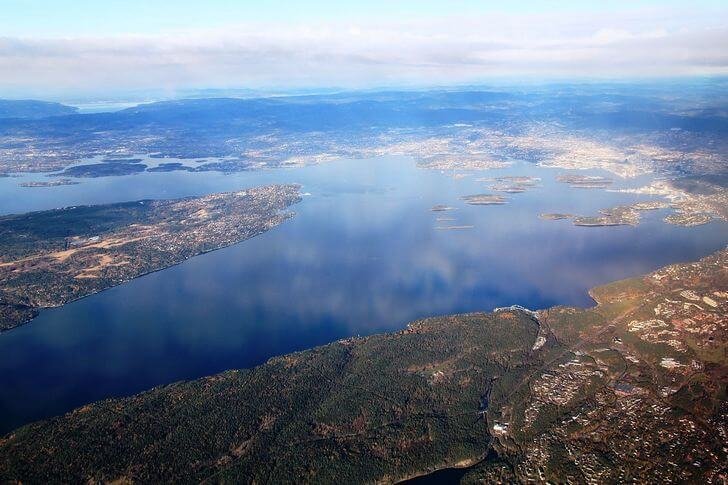
Address: Oslo fjord, Oslo, Norway
Opening hours: 09:00 - 21:00